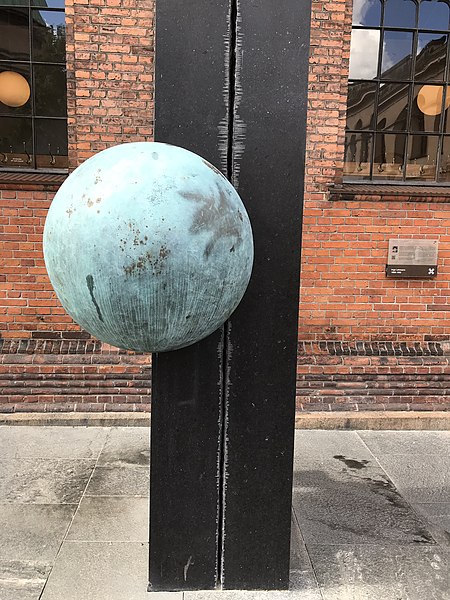Inge Lehmann was a Danish seismologist and geophysicist who is known for her discovery in 1936 of the solid inner core that exists within the molten outer core of the Earth. The seismic discontinuity in the speed of seismic waves at depths between 190 and 250 km is named the Lehmann discontinuity after her. Lehmann is considered to be a pioneer among women and scientists in seismology research.
Lehmann in 1932
Memorial to Lehmann in Copenhagen (by Elisabeth Toubro)
Seismology is the scientific study of earthquakes and the generation and propagation of elastic waves through the Earth or other planetary bodies. It also includes studies of earthquake environmental effects such as tsunamis as well as diverse seismic sources such as volcanic, tectonic, glacial, fluvial, oceanic microseism, atmospheric, and artificial processes such as explosions and human activities. A related field that uses geology to infer information regarding past earthquakes is paleoseismology. A recording of Earth motion as a function of time, created by a seismograph is called a seismogram. A seismologist is a scientist works in basic or applied seismology.
Installation for a temporary seismic station, north Iceland highland.



